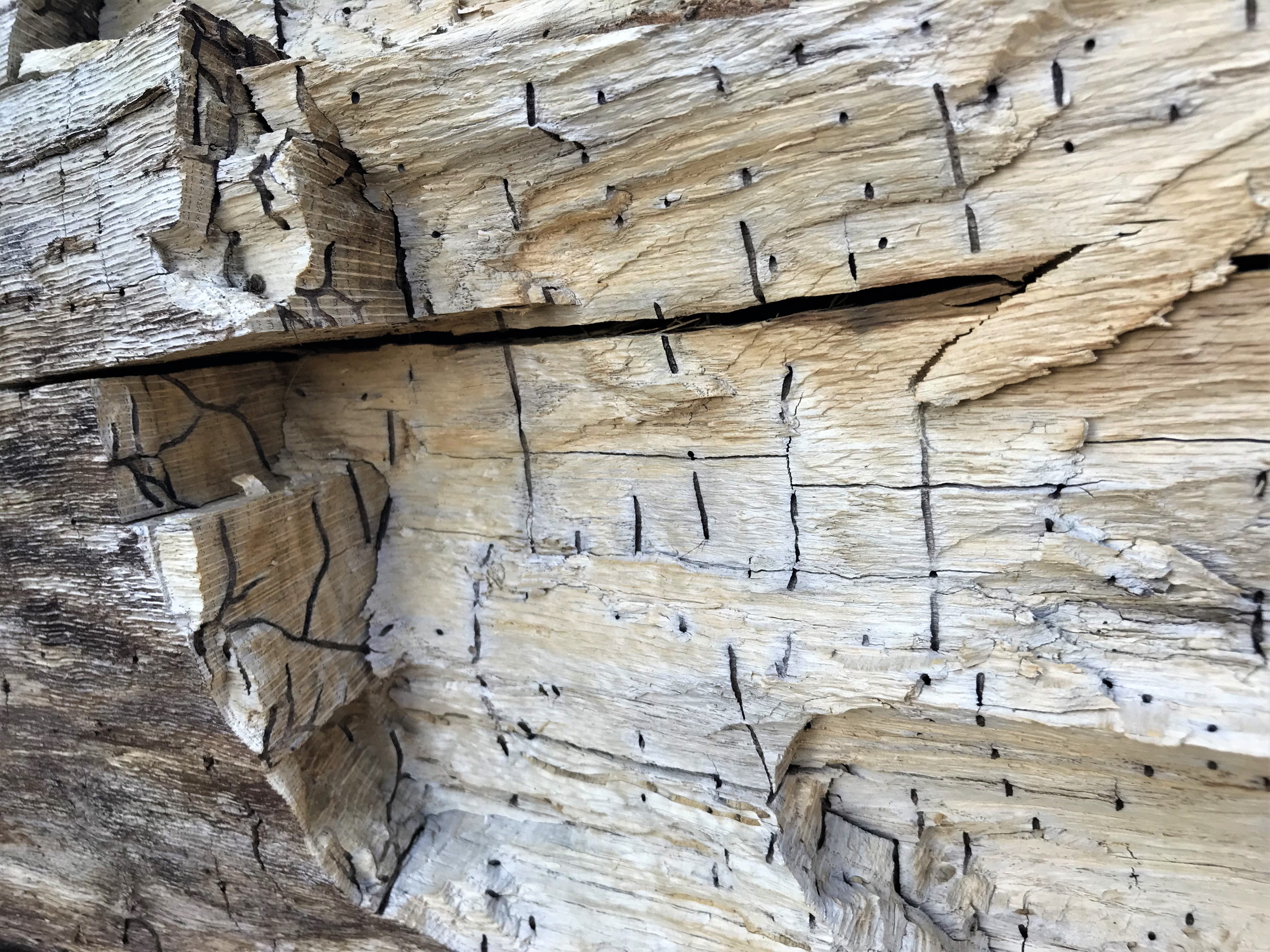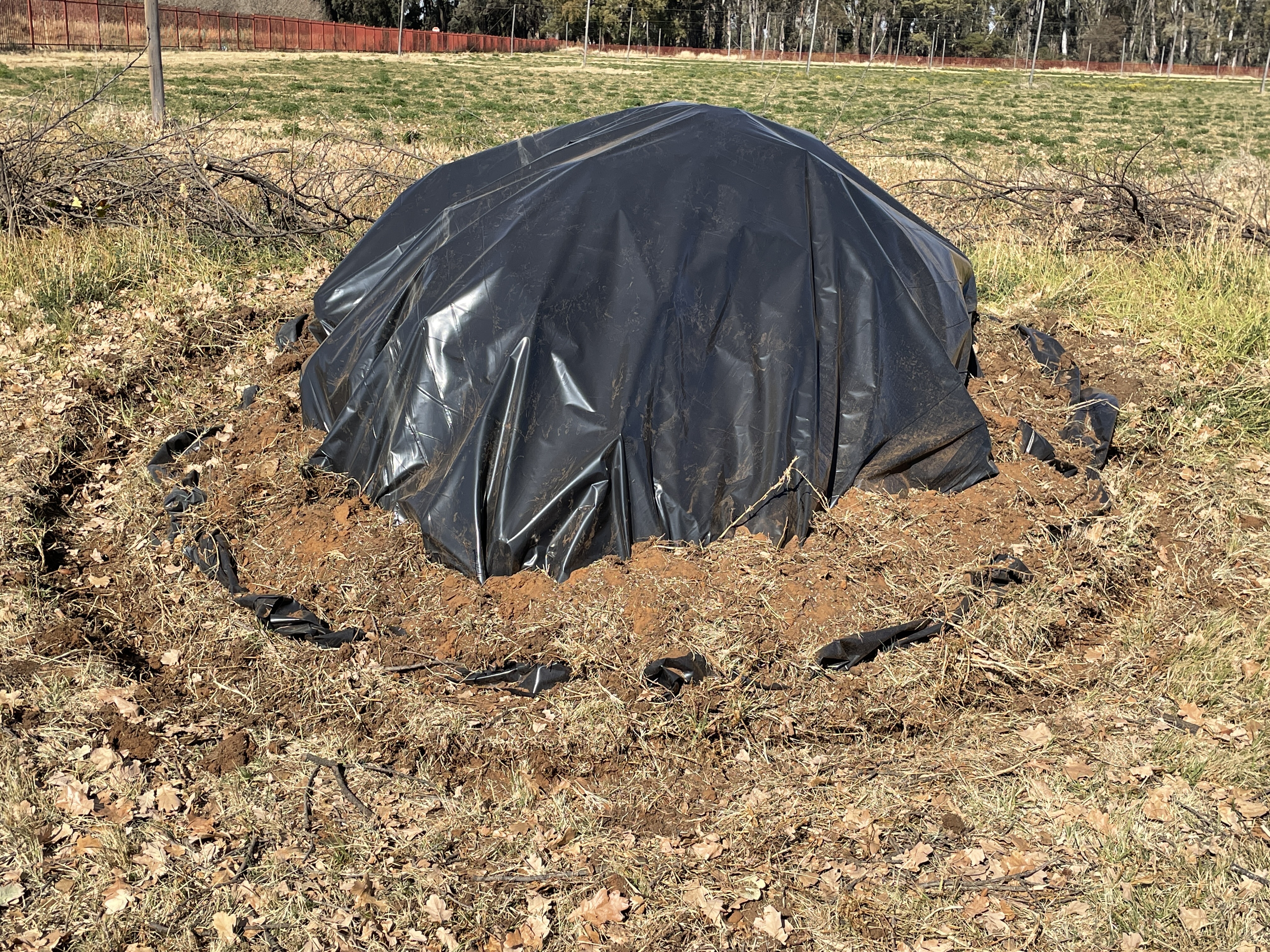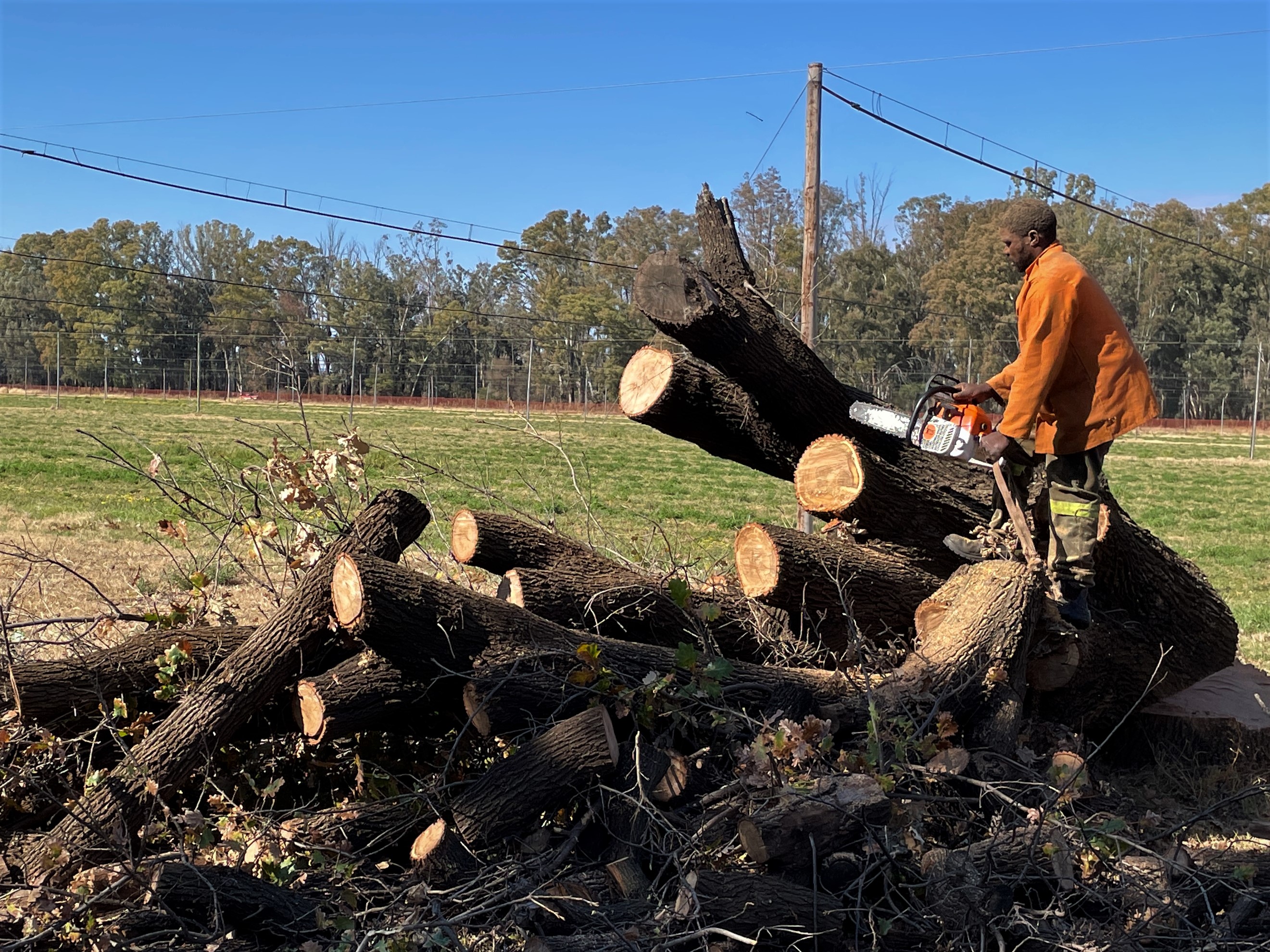There is no way in which the PSHB invasion in South Africa can be stopped. However, some treatments and management strategies can reduce its impact.
Municipalities should:
- Train staff to recognize and cut down heavily-infested reproductive host trees from streets and public areas.
- Infested branches can be cut if the main stem is not infested (This is unlikely, as PSHB usually infests the stem first).
- Designate dedicated dumping sites where infested wood can be dumped as it poses a risk of spreading the beetle.
- Chip wood to pieces finer than 5cm at the dumping sites.
- Provide a help desk (preferably online) where the public can report infested trees and get information.
Tree growers/home owners should:
- Try to determine whether the symptoms are really caused by PSHB (see FABI brochures).
- If unsure, ask help from municipal or other help desks, or your local arborist.
- If the tree is a heavily-infested reproductive host, cut it down.
- Infested branches can be cut if the main stem is not infested (This is unlikely, as PSHB usually infests the stem first).
- Dump the wood at a dedicated site dedicated for this purpose by your municipality.
- Chip the wood to finer than 5cm, allow chips to compost by keeping it wet.
- Or burn the wood on site (some beetles will fly away when the wood becomes hot or when smoke appears, so do not burn in uninfested areas).
- Or solarize (leave in full sun) chopped wood under thoroughly-sealed clear plastic sheets for at least three months in summer or six months during winter (see FABI brochures).
- At present no chemical product is registered (legal) to use on PSHB in South Africa.
DO NOT MOVE INFESTED WOOD (E.G. FIREWOOD) AROUND, ESPECIALLY NOT OUT OF THE INFESTED AREA WHERE YOU LIVE!




